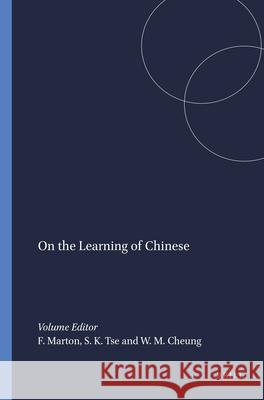On the Learning of Chinese » książka
On the Learning of Chinese
ISBN-13: 9789460912672 / Angielski / Miękka / 2010 / 208 str.
On the Learning of Chinese
ISBN-13: 9789460912672 / Angielski / Miękka / 2010 / 208 str.
(netto: 234,73 VAT: 5%)
Najniższa cena z 30 dni: 235,36
ok. 30 dni roboczych
Dostawa w 2026 r.
Darmowa dostawa!
Although more people speak Chinese than any other language on Earth, proficiency in Chinese is largely confined to the people who live in or adjacent to the Chinese Mainland and Taiwan, and to the ethnic Chinese inhabitants of the various "Chinatowns" in countries around the world. Despite its allure, many people find Chinese a hard language to learn, including a considerable number of children who learn it as mother tongue. The basic units of written Chinese are ideographic symbols called characters; and the meaning and pronunciation of each character is determined by the tone attached to it by the speaker. Facing the very large number of Chinese characters and words, it seems impossible for learners, regardless of their native language, to master the language other than via rote memorization. The attempt to facilitate the route to proficiency in Chinese has understandably attracted the attention of numerous psycholinguistic researchers and educators.Using the Theory of Variation as the primary learning framework, the authors of this book conducted a number of large-scale and robustly-designed studies to investigate the relationship between the learning and teaching of Chinese, mostly among native speakers However we believe that the results are applicable to the learning of Chinese as a second language. Studies into ways of understanding the phonological and orthographical acquisition of characters are reported; ways of helping learners come to terms with reading Chinese, a textual language that does not always correspond word-for word with the spoken discourse, are explained; and the implications of the evidence for Chinese curriculum and syllabus design are pointedly addressed by the contributors. The authors believe that there are effective ways to become skilled in Chinese and that learning Chinese can be pleasurable and interesting. They provide empirical evidence for educators, parents, policymakers and readers interested in Chinese language education. They also illuminate the path to the mastery of Chinese in schools and how Chinese should be taught in todays world.











